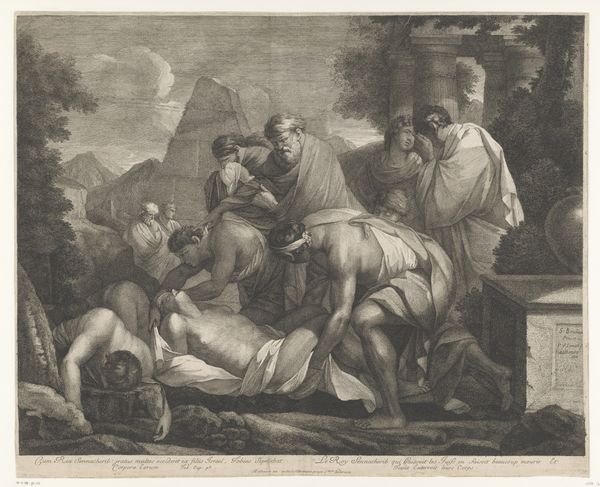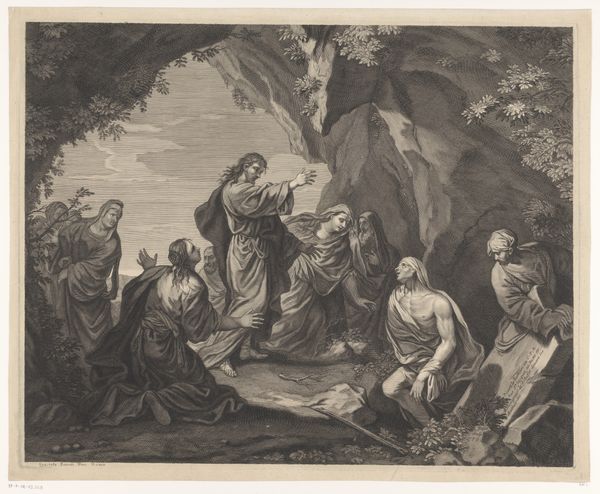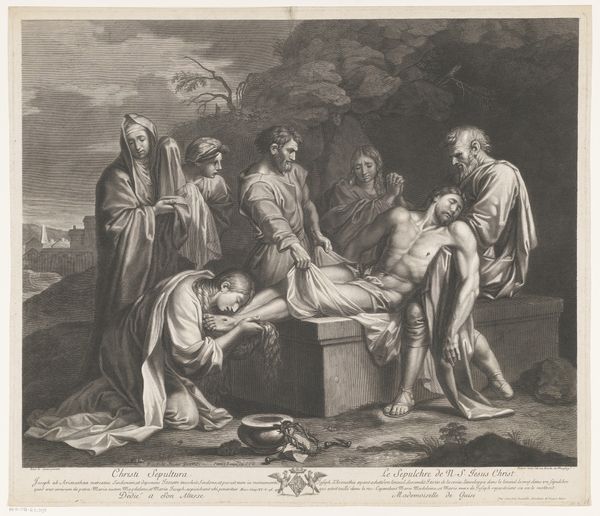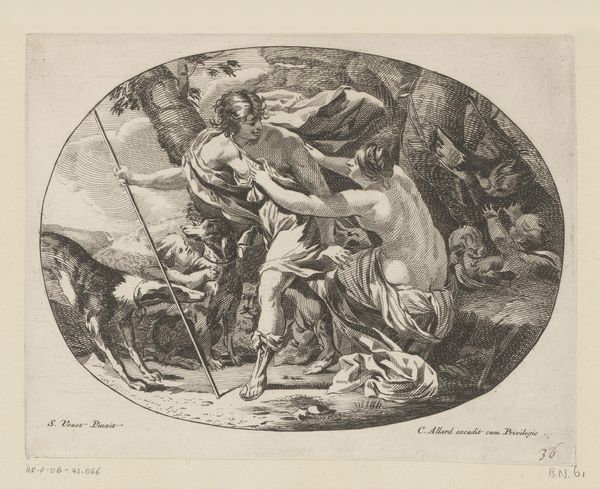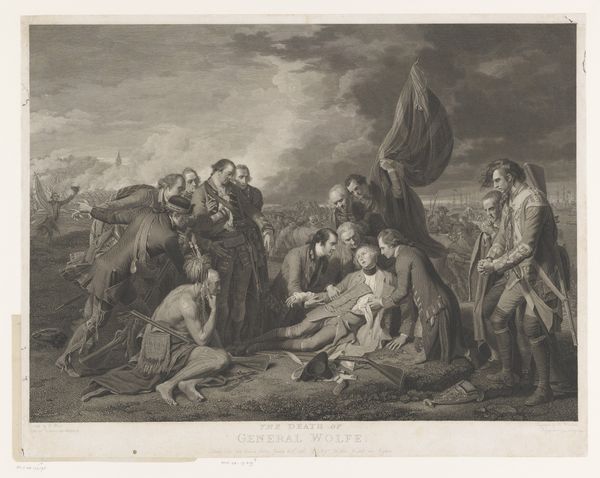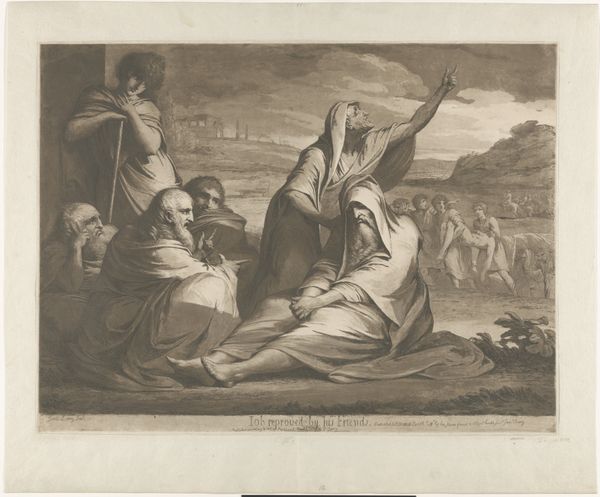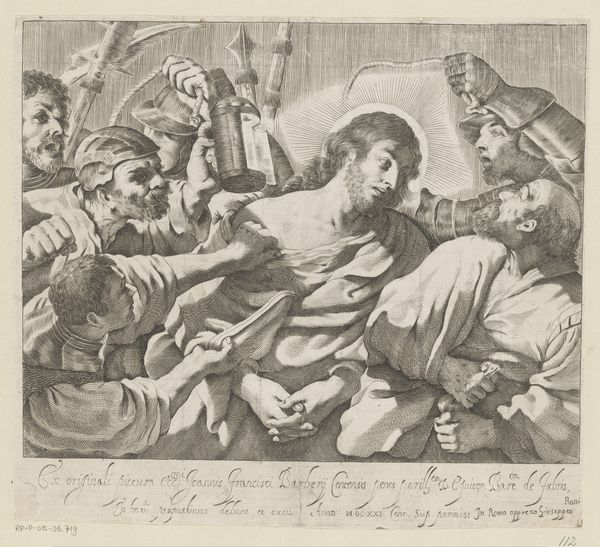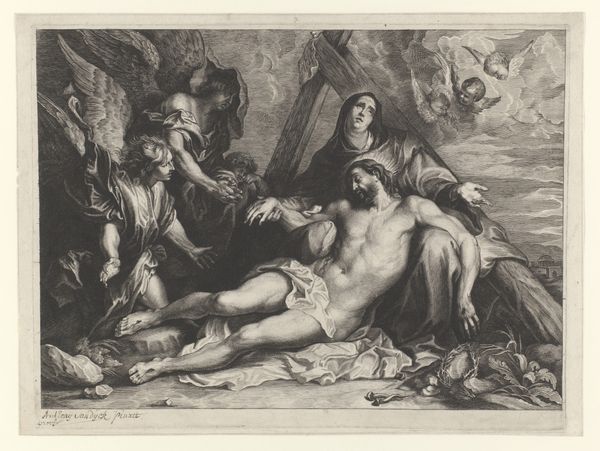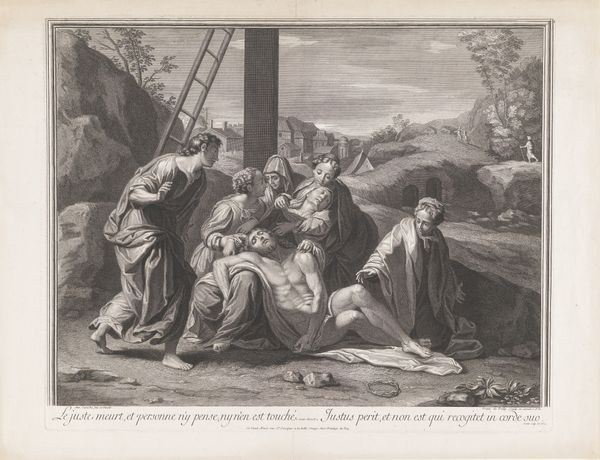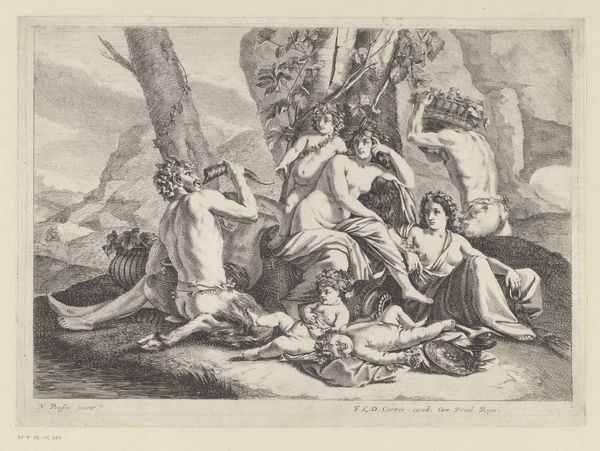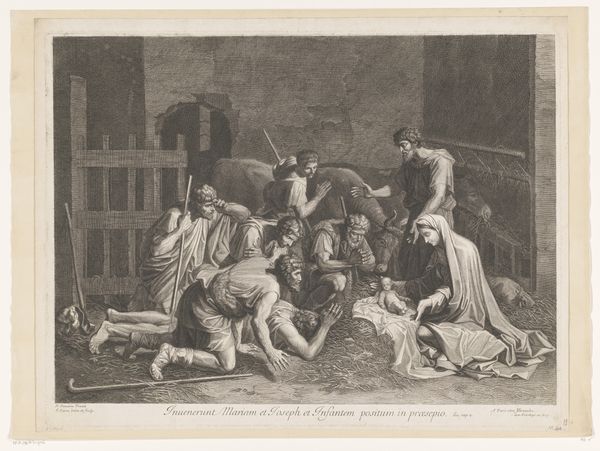
print, engraving
#
aged paper
#
toned paper
#
baroque
# print
#
old engraving style
#
figuration
#
personal sketchbook
#
history-painting
#
engraving
Dimensions: height 427 mm, width 577 mm
Copyright: Rijks Museum: Open Domain
Editor: This is "The Entombment of Christ," an engraving from 1671 by Gilles Rousselet, residing in the Rijksmuseum. There’s a starkness to it, the way the bodies are rendered in such detail against the somber background creates a very poignant mood. What symbols stand out to you in this work? Curator: Well, consider first the very act of entombment. It signifies not just death, but transition, a threshold. In many cultures, burial rituals are deeply symbolic, representing hope, remembrance, or a continued connection to the departed. Do you notice the rope the figure on the right carries? Editor: I do! It looks worn. It gives me a sense of urgency, even though they seem so deliberate. Curator: Exactly! This points to a specific moment in Christian narrative. This act carries centuries of cultural weight; here it suggests burden, shared grief, and a community undertaking. Think about the posture of the figures, the careful handling of Christ's body… what do they tell you? Editor: They all look mournful, with their bowed heads. But there is this strong sense of care, of almost reverent tenderness in the way they hold his body, and it brings me back to thinking about how important the simple action of burying a person can be to the living. Curator: Precisely. This image reminds us that certain rituals remain powerful across centuries. It's the act of communal mourning and remembrance, rendered visible through potent symbolism and masterful engraving. Editor: This has shifted my thinking about the cultural weight that an engraving can hold!
Comments
No comments
Be the first to comment and join the conversation on the ultimate creative platform.
